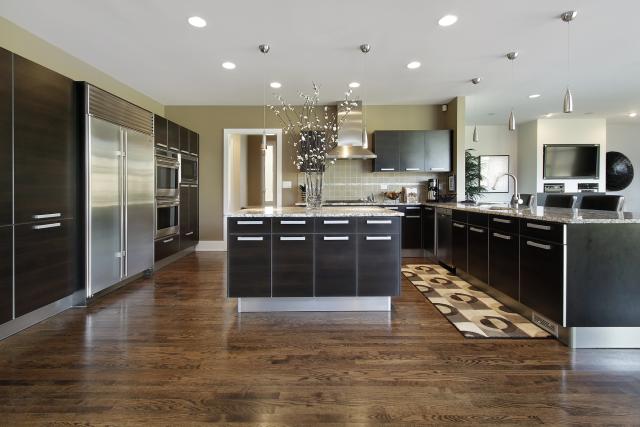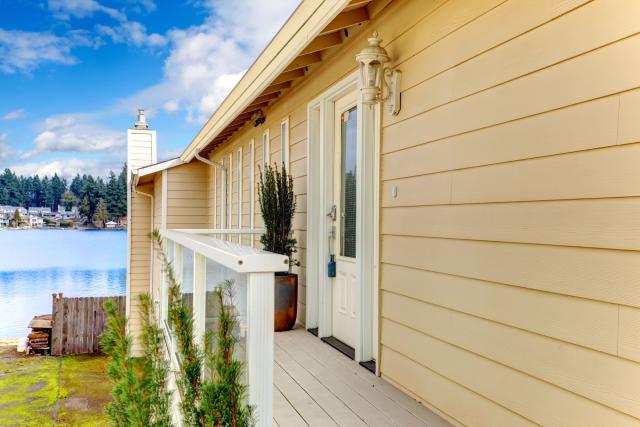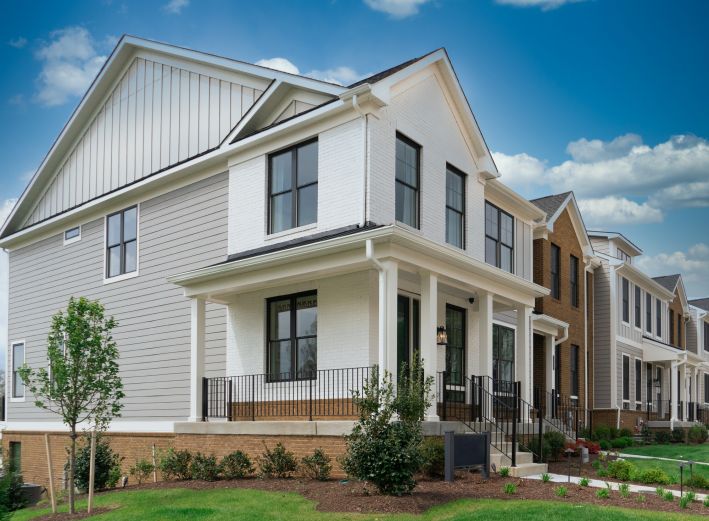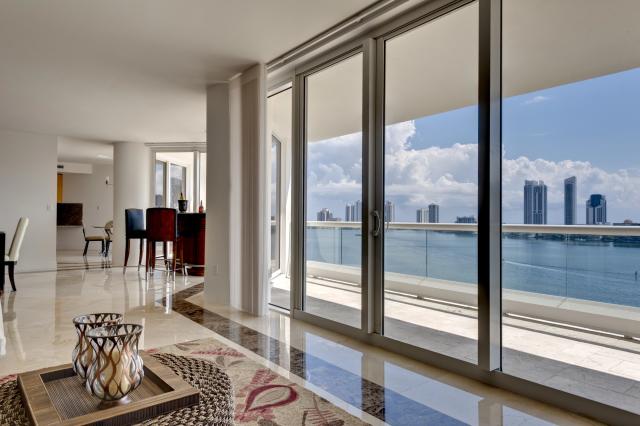
Kitchen Flooring Secrets: A Pro Designer's Guide to Smart...
Kitchen floors endure constant foot traffic, dropped cookware, and daily spills, making material...

Choosing the right siding for your house means balancing upfront costs against long-term performance. Most homeowners spend between $5,570 and $17,595 on siding replacement, with the average project costing around $11,503 for materials and installation. Vinyl siding offers the lowest entry point, ranging from $3,000 to $8,000, but it typically requires replacement after 20-40 years. Fiber cement siding costs more initially but can last 50 years or more, potentially offering better value over time. The performance gap between siding materials is significant. Vinyl remains popular for its affordability and ability to resist fire up to 750 degrees. Fiber cement siding combines cement, sand, and cellulose fibers to create exceptional strength against severe weather. When comparing your options, remember that brick represents the premium end at $10-$20 per square foot, while vinyl remains the most economical choice for budget-conscious homeowners.
Vinyl siding remains the most popular exterior cladding choice for budget-conscious homeowners. Originally introduced in the 1950s, this plastic-based option has evolved to offer numerous styles that mimic more expensive materials like wood clapboard or cedar shakes.
Vinyl siding consists primarily of polyvinyl chloride (PVC) resin, which accounts for approximately 80% of its weight. The remaining 20% includes ingredients that provide color, impact resistance, and durability. Modern vinyl siding utilizes co-extrusion manufacturing, in which two layers of PVC are applied continuously. The top capstock layer contains weatherable materials and titanium dioxide for UV resistance, while the lower substrate layer includes ground limestone to reduce costs.
Vinyl siding costs significantly less than most alternatives, averaging $3.16 per square foot. It requires only occasional cleaning with water and a mild detergent, and it resists moisture, pests, and rot. However, vinyl can become brittle in cold weather and warp in high heat, making it susceptible to cracking from hail or debris.
|
Pros |
Cons |
|---|---|
|
Low upfront cost |
Temperature sensitive |
|
Minimal maintenance |
Impact vulnerable |
|
Moisture and pest resistant |
Colors fade over time |
|
DIY-friendly installation |
Limited 20-40 year lifespan |
|
Wide variety of styles |
Environmental concerns |
Vinyl siding performs best in moderate climates that experience minimal temperature swings. It excels in rainy, humid regions, where its moisture resistance prevents mold issues, and in areas with pest problems, as it resists termites and carpenter ants. Coastal zones with salty air also benefit from vinyl's resistance to corrosion.
Vinyl struggles in severe temperature extremes. Cold climates can reduce its lifespan to 10-20 years due to freeze-thaw cracking, while hot climates may cause warping if improperly installed.
Total installation costs average $15,315, although projects can range from $613 to $33,000, depending on the home size. Professional labor runs $54-$60 per hour. Quality depends largely on thickness:
Vinyl siding typically lasts 30-40 years and offers an 80% return on investment, making it a cost-effective choice for homeowners seeking immediate savings with reasonable long-term value.
Best for: Budget-conscious homeowners in moderate climates who want low-maintenance siding with good moisture resistance.
Wood siding delivers unmatched natural warmth and character that manufactured alternatives struggle to replicate. This timeless choice appeals to homeowners who prioritize authentic beauty over convenience, though it demands consistent attention to maintain its appearance and performance. Wood remains a premium siding option for properties where natural aesthetics are most valued.
Cedar, pine, cypress, redwood, and fir represent the most common wood species for exterior siding. Cedar and redwood stand out for their natural resistance to decay and insects. Cedar varieties include eastern white cedar, red cedar, and Alaskan yellow cedar—each offering the color characteristics their names suggest. Pine offers affordability but lacks cedar's natural resistance to rot and insects. Cypress can last up to 100 years with proper maintenance.
Wood siding styles offer distinct advantages for different applications:
|
Style |
Description |
Advantages |
|---|---|---|
|
Clapboard/Lap |
Overlapping horizontal boards |
Natural water shedding, classic look |
|
Board & Batten |
Vertical boards with narrow strips covering seams |
Resists extreme weather, distinctive look |
|
Shakes |
Split wooden pieces with rustic texture |
Unique texture and grain on every piece |
|
Shingles |
Sawn pieces with smooth texture |
Uniform look, DIY-friendly installation |
|
Tongue & Groove |
Interlocking planks |
Strong, tight joint connections |
Pro Tip: Thermally modified wood uses only heat and water treatment to reduce moisture absorption and pest infestation risks, offering enhanced durability for wood siding projects.
Wood provides aesthetic versatility that other materials can't match. You can stain or paint it in any color and finish. The material offers natural insulation properties, creating barriers against heat loss in winter and heat gain in summer.
Environmentally conscious homeowners appreciate wood as a renewable, biodegradable resource. Wood siding also provides excellent acoustic insulation, reducing noise transmission from outside—particularly valuable in urban areas with high traffic.
Wood's beauty requires ongoing care. All wood siding needs sealing with paint, stain, or clear sealer. Paint requires reapplication approximately every five years, while stain lasts longer due to its penetrating nature. Clear sealers need reapplication at least every two years.
Regular maintenance includes annual cleaning with warm, soapy water and soft-bristled brushes, inspection for termites, mold, and rot, refinishing every 3-5 years depending on UV exposure, and immediate repair of damaged sections to prevent water infiltration.
Professional maintenance costs add up over time. Painting a two-story, 2,300-square-foot house costs $3,000-$5,000, while staining costs $2,000-$4,000.
Wood siding is best suited for classic architectural styles, particularly traditional homes, cottages, and premium projects where natural aesthetics are a priority. Homeowners with adequate budgets for both installation and ongoing maintenance will find that wood delivers superior curb appeal. Cedar and redwood represent premium options that can significantly enhance a home's value.
Wood performs best in moderate climates, where there are no extreme moisture or temperature fluctuations. Homes with proper overhangs and effective drainage systems help minimize maintenance issues and extend the lifespan of wood siding.
Best for: Traditional and premium homes where natural beauty justifies higher maintenance costs.

Fiber cement siding combines four basic ingredients: Portland cement (a binding agent), sand or silica (filler), cellulose fibers (for flexibility and resilience), and water (for activation and mixing). This combination creates a sturdy material that can be molded into planks, panels, and shingles that closely mimic the appearance of wood.
The manufacturing process blends these materials, forms them into sheets or planks, and subjects them to high-pressure steam curing to enhance durability. Fiber cement replaced asbestos-cement siding in the 1980s, offering similar benefits without the health risks.
Fiber cement siding excels in fire resistance, achieving a Class A fire rating (the highest possible) when tested according to ASTM E84 standards, with a flame spread index of 0. Unlike vinyl siding, which melts instantly, or wood, which fuels flames, fiber cement will not ignite when exposed to direct fire.
This siding performs exceptionally well across various challenging conditions:
|
Condition |
Performance |
|---|---|
|
Moisture |
Resists water damage, won't rot or swell |
|
Weather |
Withstands hurricanes, UV rays, snow, and hail |
|
Pests |
Completely unappealing to termites and woodpeckers |
|
Aging |
Maintains appearance with minimal fading |
Pro Tip: For homes in wildfire-prone areas, combining fiber-cement siding with other fire-resistant home features creates a defensible barrier that can significantly enhance your home's fire safety rating.
Fiber cement siding typically costs between $5.00 and $14.00 per square foot installed, positioning it between budget-friendly vinyl and premium options like brick. The total project average runs about $14,674 for a typical home.
This investment pays off through extraordinary longevity—fiber cement lasts approximately 50 years with proper installation and maintenance. Some independent tests suggest it can endure up to 100 years, far outlasting vinyl's 20-40 year lifespan.
Fiber cement siding offers an excellent return on investment, with up to 76% of costs potentially recouped when selling your home. For homeowners calculating long-term value rather than just initial expense, fiber cement presents a strong case.
James Hardie dominates the fiber-cement industry, with its HardiePlank product virtually synonymous with the category. Their extensive color selection, specialized climate-engineered formulations, and ColorPlus Technology (factory-applied finishes warranted for 15 years) make them the benchmark.
Other reputable manufacturers include:
Each manufacturer brings unique advantages, allowing you to select products that best match your specific needs regarding appearance, performance, and budget considerations.
Best for: Homeowners seeking long-term value with minimal maintenance in various climates, especially those prioritizing fire resistance
Homeowners seeking alternatives between the expense of natural wood and the budget of vinyl have two solid middle-ground options. Engineered wood and metal siding both address common durability and maintenance concerns while offering distinct advantages for different situations.
Engineered wood siding combines wood fibers or strands with resin adhesives. The composite material gets treated with heat and pressure to create boards that resist rot, moisture, and termites. Modern products, such as LP SmartSide, utilize wood chips or strands with zinc-borate treatment systems for added protection. You can expect engineered wood to last 20-30 years, providing the appearance of natural wood without many of its traditional drawbacks.
Metal siding is available in primarily two varieties: steel and aluminum, both of which offer impressive durability with lifespans that can reach 50 years. Steel features a metallic core with corrosion-resistant coatings, while aluminum provides a lighter alternative. Both materials resist moisture, mold, and insect damage. Metal siding also reflects heat, potentially reducing your cooling costs, and requires virtually no maintenance beyond occasional washing.
|
Feature |
Engineered Wood |
Metal Siding |
|---|---|---|
|
Durability |
Resistant to rot and insects |
Impervious to moisture, fire-resistant |
|
Maintenance |
Periodic painting needed |
Minimal maintenance required |
|
Appearance |
Realistic wood texture |
Can appear industrial |
|
Cost |
$2-4 per square foot |
$3-8 (aluminum), $5-8 (steel) |
|
Weight |
150-200 lbs/100 sq. ft |
100 lbs/100 sq. ft |
|
Installation |
Requires edge sealing |
Minimal caulking needed |
Pro Tip: Opt for steel siding with a Class A fire rating in areas prone to wildfires, as it won't combust or contribute to flame spread.
Engineered wood siding works well on traditional-style homes, where you want the warmth of wood without the high maintenance costs. It performs best in moderate climates with limited exposure to extreme moisture.
Metal siding excels in harsh weather environments, coastal areas, and regions prone to wildfires. Steel siding offers superior protection in areas with heavy precipitation or extreme temperature swings.
Best for engineered wood: Traditional homes in moderate climates seeking wood appearance with lower maintenance
Best for metal siding: Harsh weather regions, coastal areas, and fire-prone zones needing maximum durability
Choosing the right siding involves considering several key factors and determining which ones to prioritize. You should consider the following, or you can defer to the contractor you hire to assist you in making a choice.
Different siding materials offer vastly different lifespans:
|
Material |
Average Lifespan |
Durability Factors |
|---|---|---|
|
20-40 years |
Vulnerable to UV damage, extreme heat/cold |
|
|
20-40 years [232] |
Requires regular upkeep to achieve full lifespan |
|
|
50+ years |
Superior resistance to moisture, fire, and pests |
|
|
50-80 years |
Prone to cracking in freeze-thaw climates |
|
|
Brick |
100+ years |
Exceptional durability in all conditions |
Vinyl demands minimal upkeep—just annual cleaning with mild soap and water. Wood requires the most attention, needing staining or painting every 3 to 7 years. Fiber cement typically needs repainting every 10-15 years.
Pro Tip: For coastal homes, consider aluminum or fiber cement siding, as both materials resist salt air corrosion.
Consider your climate and the severe weather your siding will likely encounter. Hot southern regions benefit from lighter colors that reflect heat better, preventing warping. Homes in humid areas need siding that resists water absorption. For hurricane-prone areas, look for high-wind-rated materials.
Balance upfront cost and lifespan for the best value. While vinyl offers the lowest upfront cost ($2-$7 per square foot), fiber cement ($5-$10) often provides better long-term value. High-quality installation matters—poorly installed siding fails prematurely regardless of material.
Your siding plays a crucial role in your home's overall curb appeal, so consider the appearance you're aiming for when making your decision. Consider how different materials age—some develop character while others deteriorate.
Choosing the right siding for your home comes down to matching material characteristics with your specific needs and circumstances. Vinyl offers the most accessible entry point for budget-conscious homeowners, while fiber cement provides superior long-term durability for those willing to invest more upfront. Wood siding remains the premium choice when natural beauty takes priority over maintenance convenience.
Climate considerations should guide your decision as much as budget. Fiber cement performs well in virtually any environment, making it a safe choice for most regions. Vinyl works best in moderate climates, while metal siding excels in areas with severe weather, wildfires, or hurricane risks.
Consider the long-term implications when evaluating your options. Consider the total cost of ownership, including maintenance requirements, expected lifespan, and potential energy savings. Brick may cost significantly more initially, but its century-plus durability can justify the investment for long-term homeowners. Engineered wood strikes a practical balance between appearance and maintenance, offering the look of wood without its traditional drawbacks.
Remember that installation quality matters as much as material selection. Even the best siding materials can fail prematurely due to poor installation. Research qualified contractors in your area and get multiple quotes to ensure your investment protects your home for decades to come.
Smart homeowners can save thousands by understanding how different siding materials balance upfront costs against long-term value and maintenance requirements.
• Vinyl siding offers the best budget entry point at $3,000-$8,000 but lasts only 20-40 years, making it ideal for moderate climates and cost-conscious buyers.
• Fiber cement delivers superior long-term value with a 50+ year lifespan and Class A fire rating, costing $5-$14 per square foot but requiring minimal maintenance.
• Wood siding provides unmatched natural beauty but demands consistent maintenance every 3-5 years, making it best suited for traditional homes in moderate climates.
• Climate significantly impacts material performance - vinyl becomes brittle in cold weather, while fiber cement and metal excel in harsh conditions, including hurricanes and wildfires.
• Professional siding installation matters as much as material choice - even premium siding fails prematurely when poorly installed, so research qualified contractors alongside material options.
The key to maximizing your investment is matching siding material to your specific climate, maintenance capacity, and long-term housing plans rather than choosing based solely on initial cost.
GET THE ESSENCE OF RELEVANT HOME
IMPROVEMENT TOPICS IN LESS THAN 5 MINUTES

Kitchen Flooring Secrets: A Pro Designer's Guide to Smart...
Kitchen floors endure constant foot traffic, dropped cookware, and daily spills, making material...

Window replacement ranks among the most necessary yet expensive home improvements you'll face. Bu...

Thanks for joining our homeowners’ community.
Stay tuned!
Choose the category
Choose the category